QUONTO (Quality Ontology) is an ontology that formalizes all the knowledge needed for the realization of a multi-perspective and adaptive evaluation of e-government portals. Different perspectives citizens, experts, technical staff) are taken into account and the mappings between them are defined using the ontology, enabling a comprehensive and holistic view of e-government service quality. Although QUONTO has been initially developed for e-government portals, the top layer of the ontology is generic and we will be working on making the ontology useable for all types of portals.
Download a presentation which describes the quality model used within the QUONTO ontology.
##Description:
QUONTO is a three-layer ontology, consisting of 122 concepts, 50 properties and 160 restrictions. It is formalised using OWL, the standard language for representing ontologies on the web. Qunoto has been partially developed using the open source ontology editor Protégé and has been successfully checked for inconsistencies using the Description Logic Reasoner RacerPro.
QUONTO is structured in three layers. Each layer of the ontology is related with a different level of abstraction concerning the modeled concepts and relations between concepts.

###The top layer of Quonto
The top layer is the most abstract, the middle layer follows, while the third one is application specific and is strongly related with the particular e-government portal where the ontology will be integrated. The aim of the top layer ontology is to define a minimal set of high level concepts and relations between them that are needed to describe the notion of quality of service. This layer concerns quality of service in general and models the theoretical foundations upon which the multi-perspective approach for quality evaluation of public e-services is based.
The middle layer ontology concerns quality of e-government services and models quality aspects related to e-government services. The third layer of our ontology, the bottom one, is domain-specific. The aim of this layer is to support the different configurations of each e-government portal’s system. For example it is possible that some concepts of the middle layer ontology cannot be applied to a specific e-government portal.
The bottom level ontology is responsible for the relevant configurations to the middle layer one, in order to support compatibility with each service provider’s system.
##Publications:
- Magoutas, B., C. Halaris, G. Mentzas (2007) An Ontology for the Multi-Perspective Evaluation of Quality in E-government Services , Sixth International EGOV Conference 2007 , Regensburg (Germany), September 3-7, 2007.
##Downloads:
The ontologies are available here:
You may also download the Protege pprj file.

